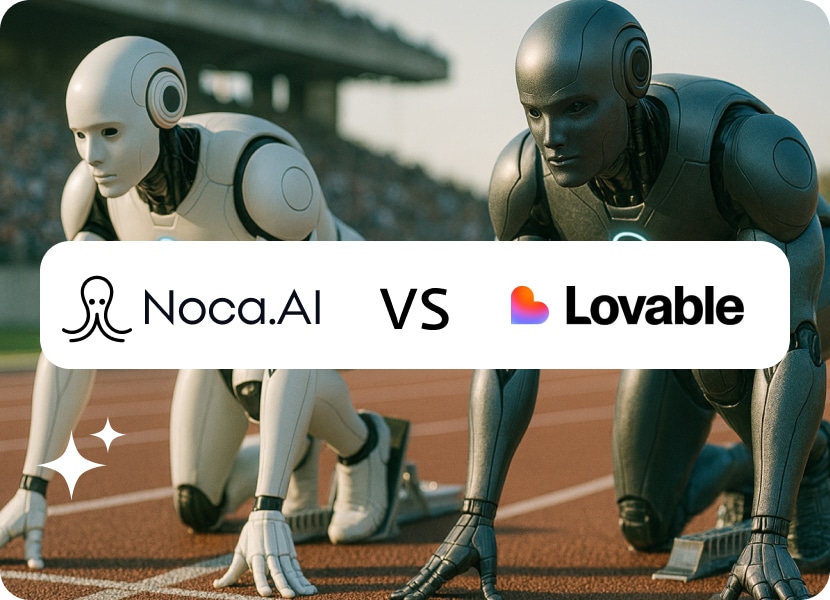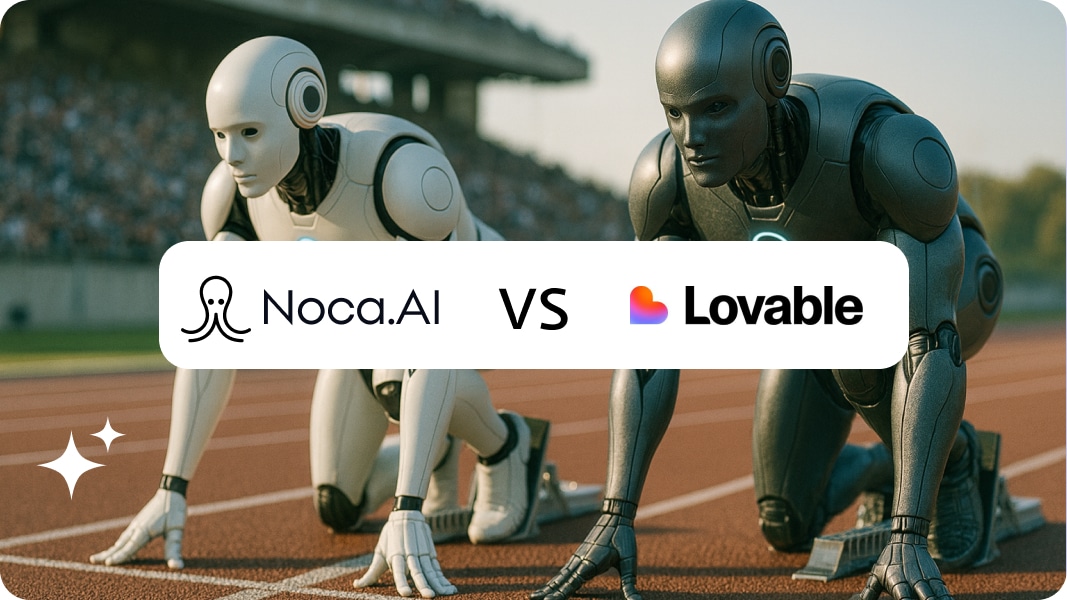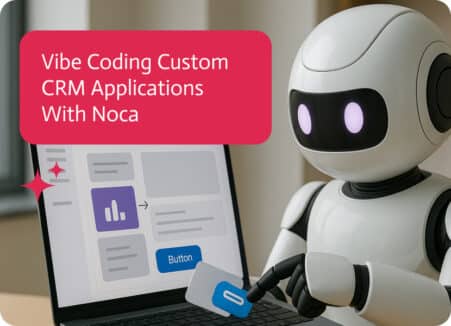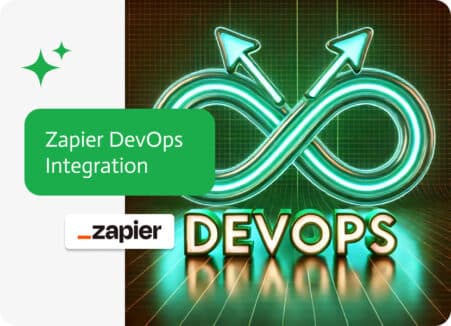

Noca vs Lovable: Who’s Really Leading Vibe Coding?
So, you’ve probably seen those ads floating around. They show apps getting built from just a few lines of text. The claim is something like, “Just describe your idea, and boom, you’ve got a working app in minutes!” Welcome to vibe coding, the creative cousin of coding. It’s the more free-flowing way to code, where you start with your idea, aka the “vibe,” and a seriously able AI.
Two names keep popping up in this fast-growing scene: Lovable and Noca. Both promise to turn your ideas into real, working software with a single prompt. But once you dig in a little deeper, it’s clear these two platforms aren’t even playing the same game.
Here we’ll take a much closer look to find what makes each tick, what separates the sizzle from the substance, and which platform actually delivers when it comes to real-world, production-ready magic.
First, What Exactly Is Vibe Coding?
If traditional coding can be explained as telling computers how to do something, then vibe coding refers to telling them what you want and then leaving the rest to our newfound friend AI to figure out the rest.
You describe your goal in plain language:
“Build a case management dashboard that automatically tags incoming tickets, prioritizes urgent ones, and updates Slack when resolved.”
With vibe coding, the idea is that you could get a basic version of that app, complete with the forms, the behind-the-scenes logic, connections to other services, and even UI included. That’s the promise, but as anyone who’s tried to automate their own job knows, promises and production are two different beasts.
Meet the Platforms
Noca: The Enterprise-Grade Vibe Coding Powerhouse
Noca takes the very same concept of AI-assisted app building through natural language and levels it up for real operational use. Instead of just generating apps, Noca builds entire digital systems: dashboards, apps, case management tools, automated workflows, customer portals, even entire data-backed business operations.
It’s essentially vibe coding for people who actually have to run things, not just demo them.
You describe what you need done, like, “When a lead comes in from Salesforce, create a ticket, assign it by product they’re interested in, escalate if it’s not been touched in 4 hours, and notify Slack,” and Noca assembles the logic, data connections, and interface.
It’s like having a no-code engineer on your team who already understands your business stack.
Lovable: The “Instant Gratification” App Builder
Lovable burst onto the scene as the platform for anyone to build apps, no code, no setup, no clue required. Founded in Sweden, it’s a darling among startup founders and designers who want to spin up MVPs faster than you can say “pitch deck.”
You drop in a natural language description, something like, “I want a task app for freelancers with client tracking and payments,” and Lovable then creates the whole thing, including what you see on the screen, the behind-the-scenes stuff, the database, and the hosting.
It’s fast. It’s pretty. It’s fun.
But beneath that glossy ease, Lovable’s biggest strength, simplicity, is also its Achilles heel though. Users have reported everything from security misconfigurations to limited control once things get complex. It’s a little like buying a prefab house: amazing for getting started, tricky if you later decide you want to move the kitchen.
The Showdown: Noca vs Lovable
Let’s line them up feature for feature, vibe for vibe.
1. Ease of Use
- Lovable: Wins on pure simplicity. You can build your first app before you’ve finished your coffee. Perfect for non-technical founders or creatives who just want to see something working.
- Noca: Still perfect for non-techies with a touch more structure, but you’ll get far more flexibility. You’re not just building toy projects, you’re actually building tools that plug into real systems.
Lovable is for play, Noca is for production.
Complexity Handling
- Lovable: Great for small, standalone apps, landing pages, internal tools, and prototypes. But once you start adding connections to other services and make the rules more complicated, it starts to get a little shaky.
- Noca: Built with complexity in mind. Handles advanced workflows, CRM integrations, cross-platform automations, and is able to evolve relatively autonomously with your business logic.
Verdict: Noca by a mile. Lovable can start the story, but Noca can finish it.
How Secure Are They, and How Easy Are They to Maintain?
Lovable made headlines this year after developers found several projects with open endpoints and exposed data (thanks to some careless defaults). It’s improving, but for anything beyond a demo, you’ll want to tread carefully.
In contrast, Noca promotes enterprise-grade security, auditability, and control, all baked into its vibe coding workflow. You can inspect logic, tweak flows, and keep an eye on everything without touching a line of raw code.
Verdict: Noca wins again, especially if you care about your data staying yours.
Integrations and Real-World Utility
Lovable plays nicely with developer-friendly tools like Supabase and simple APIs. It’s half decent if you just need a web app that looks good and works.
Noca integrates directly with heavyweights such as Salesforce or NetSuite, allowing the automation of complicated, cross-department workflows. In short: Lovable builds apps. Noca builds ecosystems.
Verdict: Noca, hands down. It’s where artificial intelligence meets the enterprise business systems.
Growth and Ownership
Lovable is great for getting started, but long-term maintainability is a question mark. If you outgrow its structure, it’s highly likely that you’ll find yourself boxed in.
Noca gives you visibility, exportability, and audit control, so as your digital system expands, you’re able to scale in tandem without the burden of starting from square one.
Verdict: Noca, especially if you see your teams continuously growing.
The Human Element of Vibe Coding
Here’s the real difference: Lovable feels like a playground. Noca feels like a workplace.
Lovable’s mission is to make coding accessible to everyone. Noca’s mission is to make businesses run smarter, powered by AI employees that actually do the work.
It’s not all just about building apps anymore; it’s about building digital co-workers that handle everything from lead follow-ups to customer case resolution.
When to Use Which
If you’re still torn, here’s the vibe-based cheat sheet:
- Use Lovable when you’re exploring ideas, designing prototypes, or need something visual fast.
- Use Noca when you’re ready to automate real workflows, connect business data, or build something your team can actually depend on.
And if you’re the type who loves to prototype fast and deploy in a savvy way, nothing stops you from starting in Lovable and refining in Noca once things get serious.
Why Noca Is Pulling Ahead
While Lovable has captured imaginations, Noca’s captured operations. Its AI-first, no-code ai agents platform is shaping the next era of vibe coding, where digital systems don’t just exist, they think, connect, and work completely autonomously.
As businesses move more toward AI-driven workflows and digital employees, Noca’s approach to vibe coding, blending AI understanding with business logic, and providing integrations that work in the real world sets it apart from Lovable. It’s not just an ordinary tool, it’s infrastructure for the autonomous enterprise.
Final Takeaway
Lovable made vibe coding lovable. Noca made it useful. If Lovable helps to start your app idea, Noca is the engine that keeps it running—with Prompt to Flow turning simple instructions into fully functional workflows. So next time you’re tempted to build something from scratch, maybe don’t.
Just tell Noca what you need, and watch it build your next great digital teammate, one vibe at a time.
Frequently Asked Questions: Noca vs Lovable
1. What’s the main difference between Noca and Lovable?
Lovable is built for speed; it’s the easiest way to turn an idea into a working prototype without touching code.
Noca is built for scale; it’s designed for real businesses that want automated workflows that easily integrate with CRMs and manage live operations without any code.
2. Who should use Noca?
Noca is for teams that actually run their business on software, not just demo it. It’s built for ops managers, product teams, and digital transformation leaders who want end-to-end processes performed by next-level AI.
3. Does Noca offer data security comparable to Lovable?
Lovable’s had some growing pains on the security front, with reports of public endpoints and weak defaults in early projects.
Noca, on the other hand, was built with enterprise use in mind from day one. It offers auditable workflows, permission control, and integration-level governance so your automations don’t just run efficiently, they run safely.
4. Is Noca suitable for non-technical teams?
Yes, that’s one of its strongest suits. You don’t need a computer science background to use Noca to its full potential. It guides you through building logic, integrations, and info flows in plain English. Non-technical users can create, track, and continuously refine automations without ever seeing a line of code.
5. Should I choose Noca or Lovable?
If you’re playing around, pick Lovable. If you’re planning to run your business on it, pick Noca. Lovable’s for getting your idea off the ground. Noca’s for getting it off your to-do list.


